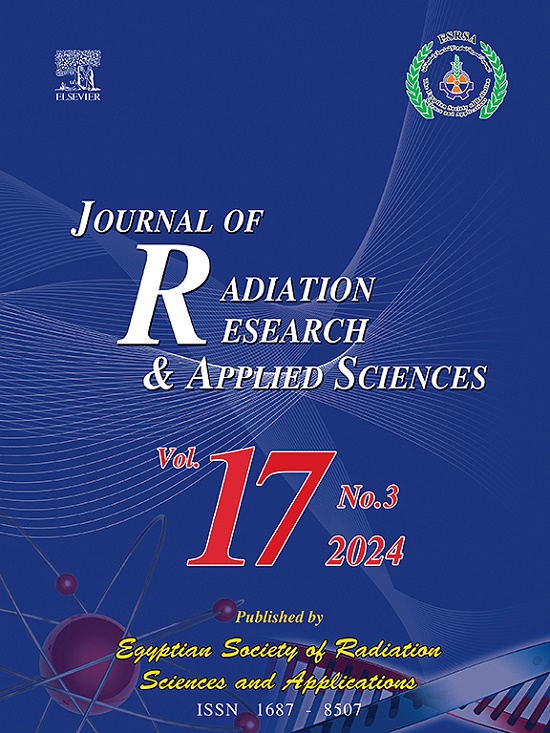Enhanced automatic diagnosis of cecum colorectal cancer using novel artificial neural network on abdominal CT radiological scans
IF 1.7
4区 综合性期刊
Q2 MULTIDISCIPLINARY SCIENCES
Journal of Radiation Research and Applied Sciences
Pub Date : 2025-02-28
DOI:10.1016/j.jrras.2025.101358
引用次数: 0
Abstract
One of the most common causes of death is colorectal cancer (CRC). The spread of cancer cells to other organs increases dramatically because of delayed detection. Presently, the only ways to increase survival rates and reduce cancer-related mortality are via prompt diagnosis and customized therapies. Artificial intelligence (AI) may significantly aid professionals in identifying CRC cases with less effort, time, and cost. This paper presents a novel convolutional neural network (CNN) for detection known as COCDNet and two sets of modifications to CNN models for identifying cecum CRC in computed tomography (CT) radiological scans. Before images are included in the architecture, they are preprocessed to reduce the noise. The data is then sent into a COCDNet model that holds 22 layers. On other hand, two types of transfer learning (TL) are used to four popular CNN models: DarkNet19, VGG16, VGG19, and AlexNet. The dataset comprises 1695 images of abdomen CT scans, categorized into two main classes as cecum cancer and normal images. COCDNet achieves the highest performance, proving an accuracy of 97.04%, an F1-score of 95.80%, and recall approaching 100%. These measures demonstrate that COCDNet is a dependable tool for early CRC diagnosis because it can both reliably detect cancer and reduce false positives. The suggested model success in detecting cecum CRC demonstrates the value of this work that improves AI models for bettering healthcare systems and saving lives.
应用新型人工神经网络增强腹部CT扫描盲肠结直肠癌的自动诊断
最常见的死亡原因之一是结直肠癌(CRC)。由于检测延迟,癌细胞向其他器官的扩散急剧增加。目前,提高生存率和降低癌症相关死亡率的唯一途径是通过及时诊断和定制治疗。人工智能(AI)可以显著地帮助专业人员以更少的精力、时间和成本识别CRC病例。本文提出了一种用于检测的新型卷积神经网络(CNN),称为COCDNet,并对CNN模型进行了两组修改,用于在计算机断层扫描(CT)放射扫描中识别盲肠CRC。在将图像包含在该体系结构之前,对其进行预处理以降低噪声。然后将数据发送到包含22层的COCDNet模型中。另一方面,两种类型的迁移学习(TL)被用于四种流行的CNN模型:DarkNet19, VGG16, VGG19和AlexNet。该数据集包括1695张腹部CT扫描图像,分为盲肠癌和正常图像两大类。COCDNet达到了最高的性能,准确率为97.04%,f1得分为95.80%,召回率接近100%。这些措施表明COCDNet是早期结直肠癌诊断的可靠工具,因为它既可以可靠地检测癌症,又可以减少假阳性。所建议的模型在检测盲肠CRC方面的成功证明了这项工作的价值,它可以改进人工智能模型,以改善医疗系统和挽救生命。
本文章由计算机程序翻译,如有差异,请以英文原文为准。
求助全文
约1分钟内获得全文
求助全文
来源期刊

Journal of Radiation Research and Applied Sciences
MULTIDISCIPLINARY SCIENCES-
自引率
5.90%
发文量
130
审稿时长
16 weeks
期刊介绍:
Journal of Radiation Research and Applied Sciences provides a high quality medium for the publication of substantial, original and scientific and technological papers on the development and applications of nuclear, radiation and isotopes in biology, medicine, drugs, biochemistry, microbiology, agriculture, entomology, food technology, chemistry, physics, solid states, engineering, environmental and applied sciences.
 求助内容:
求助内容: 应助结果提醒方式:
应助结果提醒方式:


